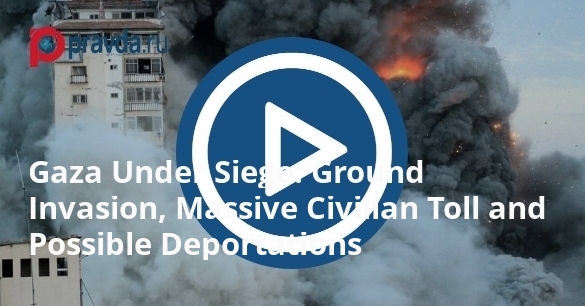By Andrey Mihayloff
Copyright pravda

On the night of September 16 the Israel Defense Forces (IDF) began a large-scale ground operation aiming to occupy Gaza City and eliminate fighters from Hamas. Prime Minister Benjamin Netanyahu set the objective of full occupation and the destruction of the militant group, while massive airstrikes and ensuing urban fighting have left at least 700,000 civilians inside the combat zone and produced heavy casualties among non-combatants. Reports indicate that, after the operation is completed, Israeli authorities may seek to remove surviving Palestinians from the area.
Ground offensive and air strikes
The ground assault started with intense air bombardment and the entry of at least two divisions — the 98th and the 162nd — into Gaza. According to Israeli broadcaster Kan, military forces dropped leaflets over the city warning residents: “If you found this poster, you are in a danger zone of military operations.” Defense Minister Israel Katz described the campaign’s aim as the “final defeat” of Hamas and the establishment of full control over the territory.
Humanitarian toll and deportation plans
Before the offensive there were roughly two million civilians in the Gaza Strip, of whom at least one million lived in the city itself. Over recent months, the IDF says some 300,000 Palestinians left Gaza, but around 700,000 remain in the enclave and are being urged to move away from combat areas even though borders are closed. CNN reported that Israel has engaged in talks with a number of countries — including South Sudan, Ethiopia, Libya, Indonesia and the unrecognized Somaliland — about relocating many Gazans after the operation. Israeli officials deny forced expulsion, saying they are offering an option to leave; other reports contend authorities intend to begin removals under the guise of voluntary departure.
International reaction and legal findings
Local Palestinian authorities place the Gaza death toll since the start of hostilities in 2023 at about 65,000. An independent United Nations commission investigating events in Gaza concluded in a recent report that Israeli actions amount to genocide, finding evidence of killings, severe physical and psychological harm, conditions intended to make life unbearable and measures that reduced birth rates — allegations the commission said meet the standards of the UN Genocide Convention. The report stated that “there is an intention to destroy the Palestinian population in Gaza” consistent with those criteria.
The campaign has drawn widespread international condemnation. Most European Union member states denounced the offensive, and the European Commission announced plans to consider a package of measures against Israel, including possible suspension of trade agreements, the Commission’s spokesperson Paula Pinho said. According to Axios, U.S. officials did not dissuade Israel from launching the operation; a White House official quoted anonymously said President Donald Trump would allow Prime Minister Netanyahu to act independently and would not stop the offensive.
Timeline of Key Events in Gaza Offensive
October 7, 2023: Fighting escalates after Hamas attack, triggering Israeli military response.
2023–2025: Continuous airstrikes and clashes leave tens of thousands of civilians dead in Gaza.
Early 2025: Approximately two million civilians remain in Gaza; 300,000 have fled in recent months.
September 16, 2025: IDF launches major ground offensive with the 98th and 162nd divisions entering Gaza City after heavy bombardment.
September 16, 2025: Israeli military drops leaflets warning civilians of danger zones.
September 16, 2025: Defense Minister Israel Katz declares aim of “final defeat” of Hamas.
September 17, 2025: European Commission prepares sanctions package against Israel in response to offensive.
September 2025: UN commission report concludes Israeli actions in Gaza constitute genocide.



